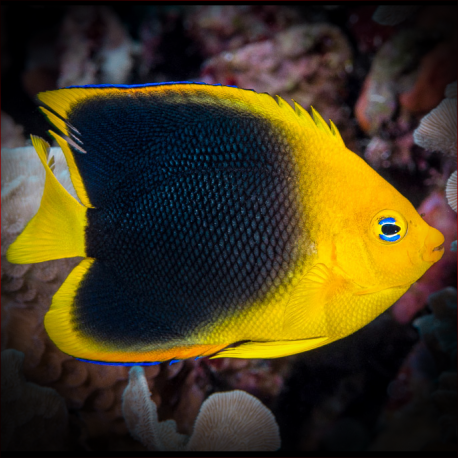More info
Datasheet
| Minimum Tank Size | 700 litres / 184.92 US gallons |
| Maximum Size | 35.0cm / 13.78inches |
| Reef Compatible | Not reef safe |
| Temperament | Aggressive towards other species |
| Temperature | 22.2°C / 71.96°F - 25.6°C / 78.08°F |
| Specific Gravity | 1.020-1.025 |
| Carbonate Hardness | 8-12 |
| pH | 8.1-8.4 |
General Description
The Rock Beauty, scientifically known as Holacanthus tricolor, is a member of the Pomacanthidae family, characterized by its large size, vibrant colors, and striking appearance. These angelfish are known for their aggressiveness and can be a challenging species to keep in a community aquarium due to their territorial nature.
Aquarium Suitability
Rock beauties are not recommended for beginner aquarists due to their demanding nature. They require a well-established aquarium with ample space for swimming and numerous hiding spots. Special care should be taken when selecting tank mates, as Rock Beauties can exhibit aggressive behavior towards other fish, especially peaceful or docile species.
Demands, Care, and Hardiness
These angelfish have an average hardiness level and require a varied diet that includes algae-based foods to maintain a healthy immune system. They need to be fed several times a day, especially when newly introduced to the aquarium. Additionally, providing plenty of hiding places and a well-maintained environment are essential for their well-being.
Reef Suitability
Rock Beauties are not considered reef-safe due to their tendency to nibble at clams, including Tridacna species. They may pose a threat to certain corals, especially soft corals and LPS. However, with careful selection of corals such as Hammer corals, Bubble corals, and others, it is possible to create a mixed coral aquarium with Rock Beauties.
Aquarium Setup
Setting up an aquarium for Rock Beauties involves dimmed lighting to mimic their natural habitat. A tank of at least 700 liters is recommended to accommodate their territorial behavior. Live rocks are essential for providing hiding spaces, and a well-run aquarium with algae-covered surfaces is beneficial for their grazing behavior.
Behaviour
Rock Beauties are known for their aggressive temperament, particularly towards other fish species. They require a spacious environment to exhibit their natural swimming behavior. Introducing Rock Beauties to the aquarium should be done cautiously, prioritizing less aggressive tank mates and careful observation of their interactions.
Feeding and Diet
In captivity, adult Rock Beauties require sponges-based foods along with a varied diet that includes larger crustaceans, macroalgae, microalgae, small crustaceans, and sponges. Feeding Rock Beauties with algae-rich foods such as seaweed and Spirulina is essential for their nutritional needs.
Habitat and Distribution
Rock Beauties are commonly found in the Western Atlantic, ranging from Georgia in the USA to Santa Catarina in Brazil. They thrive in habitats with ample hiding spots among live rocks and prefer well-established aquariums with suitable lighting and water conditions to mimic their natural environment.

